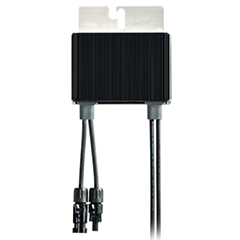Solar photovoltaic systems, once an emerging technology, are rapidly moving towards becoming a mainstream source of electricity throughout the world. However, less than a decade ago the solar industry was undergoing a difficult period of transition, with the price of PV panels decreasing globally, driven partly by an increase in competition from China. Many solar companies were struggling to survive.
It was around this time, that five friends decided to enter the market: Guy Sella, Lior Handelsman, Yoav Galin, Meir Adest and Amir Fishelov. With backgrounds in electrical engineering and research and development, the five friends recognized that there were technical difficulties holding the industry back.
While less recognizable than the solar panels, the inverter is one of the most important components within a PV system as it acts as the brain of the PV system. Inverters convert the direct current (DC) electricity generated by the solar panels into the alternating current (AC) used by the grid and in our buildings. They also manage the power output from each of the panels within a solar system.
However, each of the panels within a system typically performs at a different level from the others. As a result, an overall maximum output for each string of panels as a whole must be found, a technique known as Maximum Power Point Tracking (MPPT).
To do this, conventional string inverters find the MPPT for the entire string instead of for each individual panel, meaning lower performing panels are excluded and do not contribute to the overall output of the system. Alternatively, the lowest performing panel will cause the output of all the other panels to be dropped down to the level of the lowest performing panel. In either scenario, energy is lost.
























